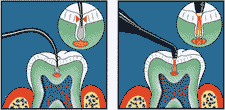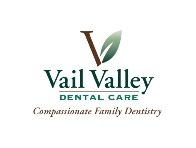Diagnodent Laser Cavity Detection Unit
How does the Diagnodent work?
The Diagnodent is a pen-like probe that sends a safe, painless laser beam into the tooth and checks its health. A number scale and an alarm will signal when there are signs of hidden decay.
The above picture shows how the Diagnodent can find cavities that other dental instruments can miss
How come my dentist could not find my cavity until it was large?
With the widespread use of fluoride in both drinking water and toothpastes, it is much harder to detect tooth decay than ever before. This is because the fluoride hardens the enamel so that most decay starts in microscopic defects in the hard surface, and can readily spread into the softer surface beneath. This destroys the tooth from the inside out. The Diagnodent allows us to determine if decay is lurking beneath the apparently healthy tooth surface.
Can you use tooth colored (white) fillings in my teeth?
Absolutely!!! As a matter of fact we only place tooth colored fillings in teeth since these not only look better, but also are stronger and smaller than silver fillings. This is because tooth colored fillings are bonded in and actually help hold the remaining parts of the tooth together. Silver on the other hand is merely wedged in and does nothing to help strengthen the tooth.
White (colored) fillings vs. silver fillings
http://www.sixmonthbraces.com/lasercavitydetection.htm







